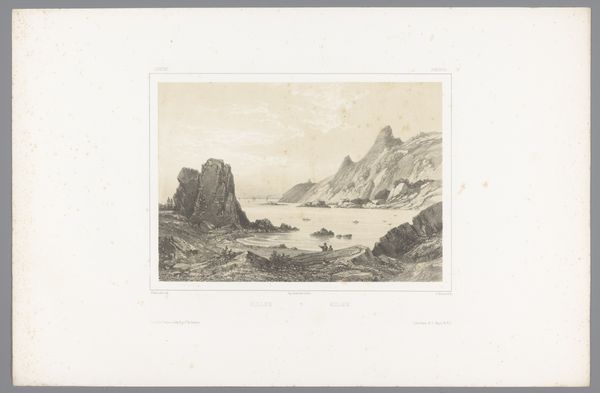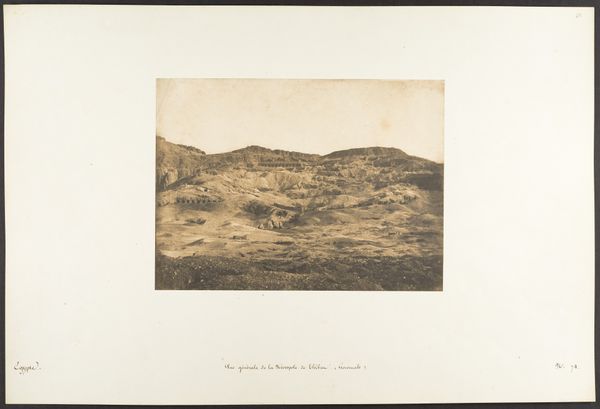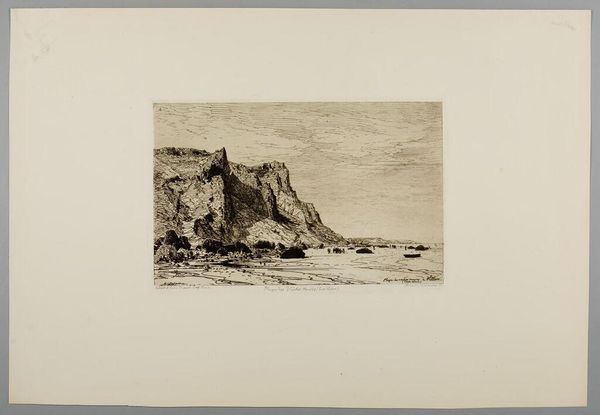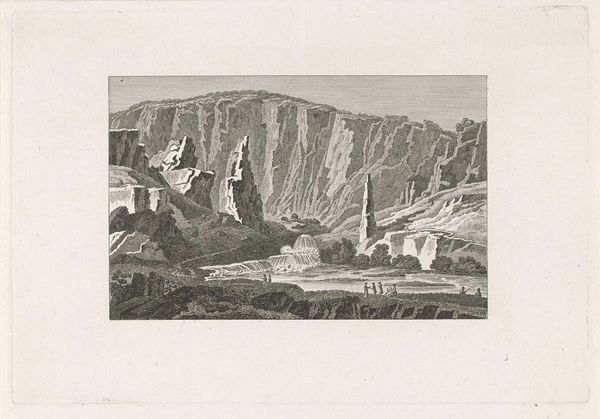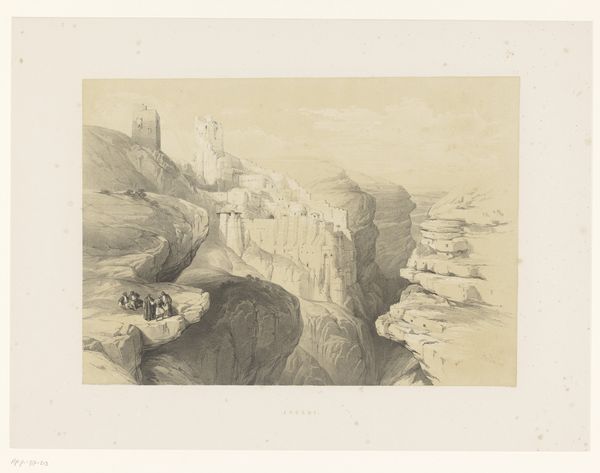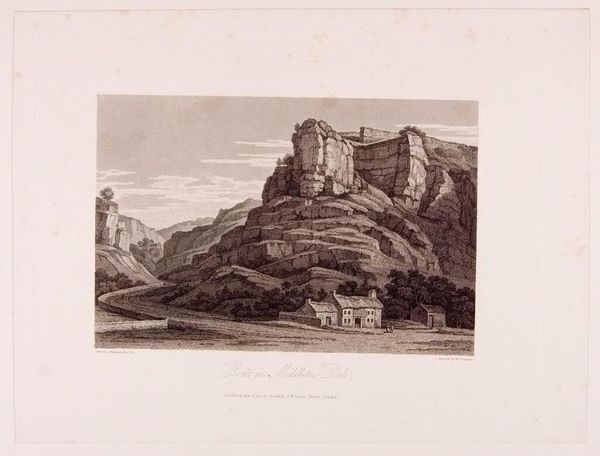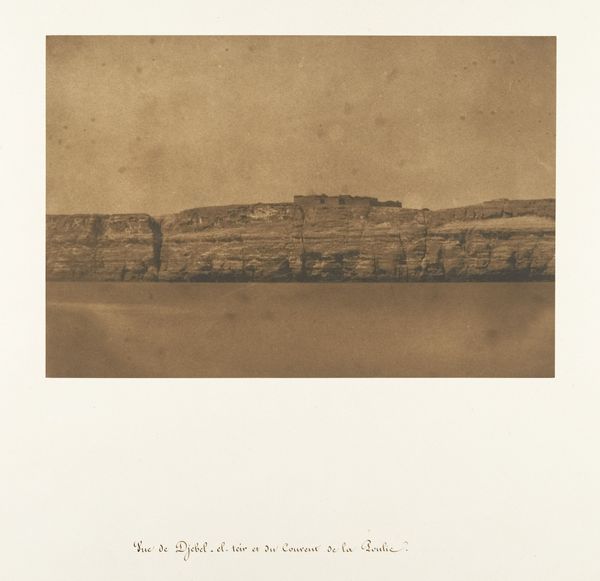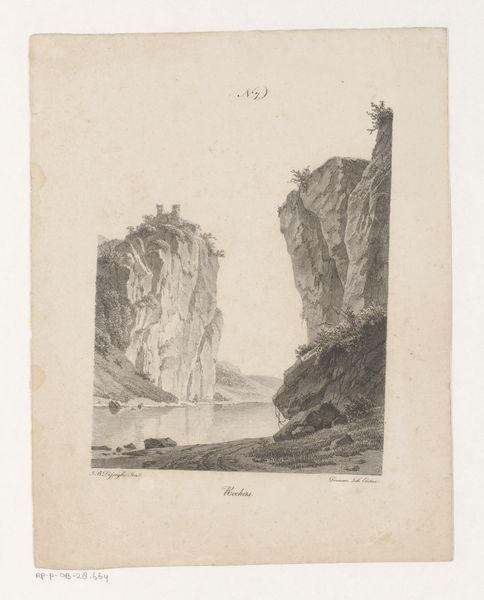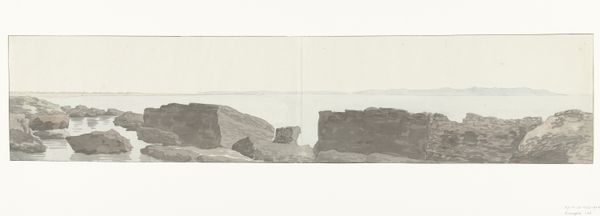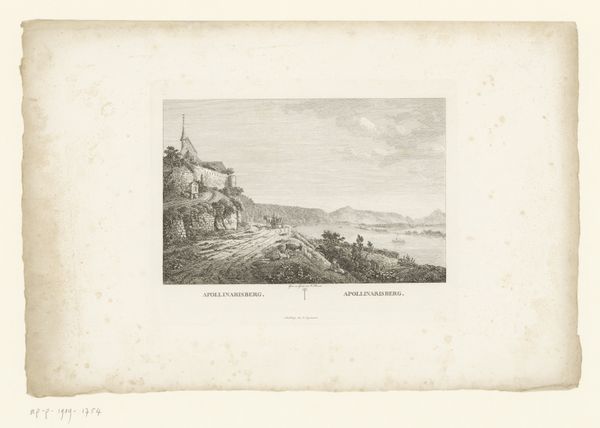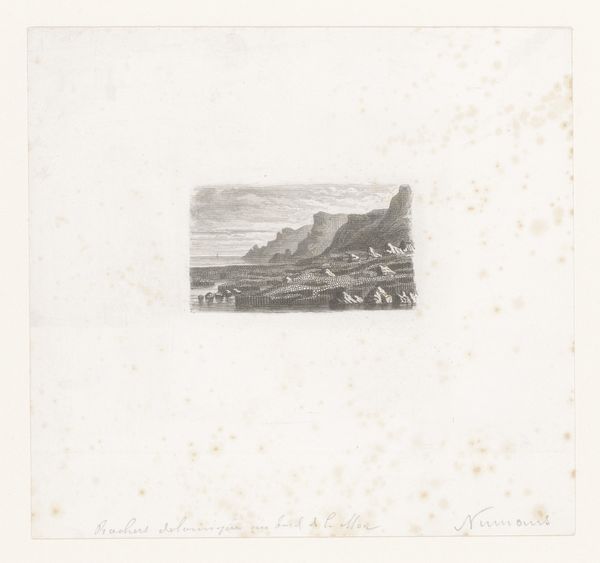
Djebel-Aboucir - Rive gauche de la Seconde Cataracte 1850
0:00
0:00
daguerreotype, photography
#
landscape
#
daguerreotype
#
photography
#
ancient-mediterranean
#
orientalism
#
realism
Dimensions: Image: 6 in. × 8 11/16 in. (15.2 × 22 cm) Mount: 12 5/16 in. × 18 11/16 in. (31.2 × 47.5 cm)
Copyright: Public Domain
Curator: This is Maxime Du Camp's "Djebel-Aboucir - Rive gauche de la Seconde Cataracte," a daguerreotype from 1850. The monochrome tones and sharp focus render a rather monumental view. What strikes you most about this landscape? Editor: The starkness of the image is quite impactful; the rock formation feels immense against the flat water. I'm curious how we should interpret the artist's choices? Curator: From a materialist perspective, it's crucial to examine the daguerreotype process itself. This early photographic technique was incredibly labor-intensive and costly. Considering Du Camp was travelling in Egypt with Gustave Flaubert, sponsored, in effect, by the French state, what does this tell us about the consumption and circulation of images of the "Orient" in the mid-19th century? Editor: So the production of the image itself carries significance. It wasn’t just about capturing a landscape, but about asserting a particular kind of authority through that capture? Curator: Precisely! Consider also the chemical processes involved. The silver-plated copper had to be meticulously prepared and exposed, then developed with mercury vapor. Each print was unique, a direct trace of the real world, yet also shaped by the photographer's technical skill and choices. How does this tension between objectivity and artistry affect your perception of the image? Editor: That’s interesting; I hadn't thought about the materiality so directly. It feels much less like a transparent window onto Egypt, and more like a manufactured commodity. Curator: Exactly. These images reinforced European notions of the exotic and the ancient, and were themselves objects of desire and trade. We can see how this shaped both artistic conventions and geopolitical power. Editor: Understanding the "how" as much as the "what" is incredibly useful. I will be taking a closer look at photography moving forward! Curator: Indeed. Analyzing the material conditions and production methods reveals layers of meaning often hidden in plain sight.
Comments
No comments
Be the first to comment and join the conversation on the ultimate creative platform.

